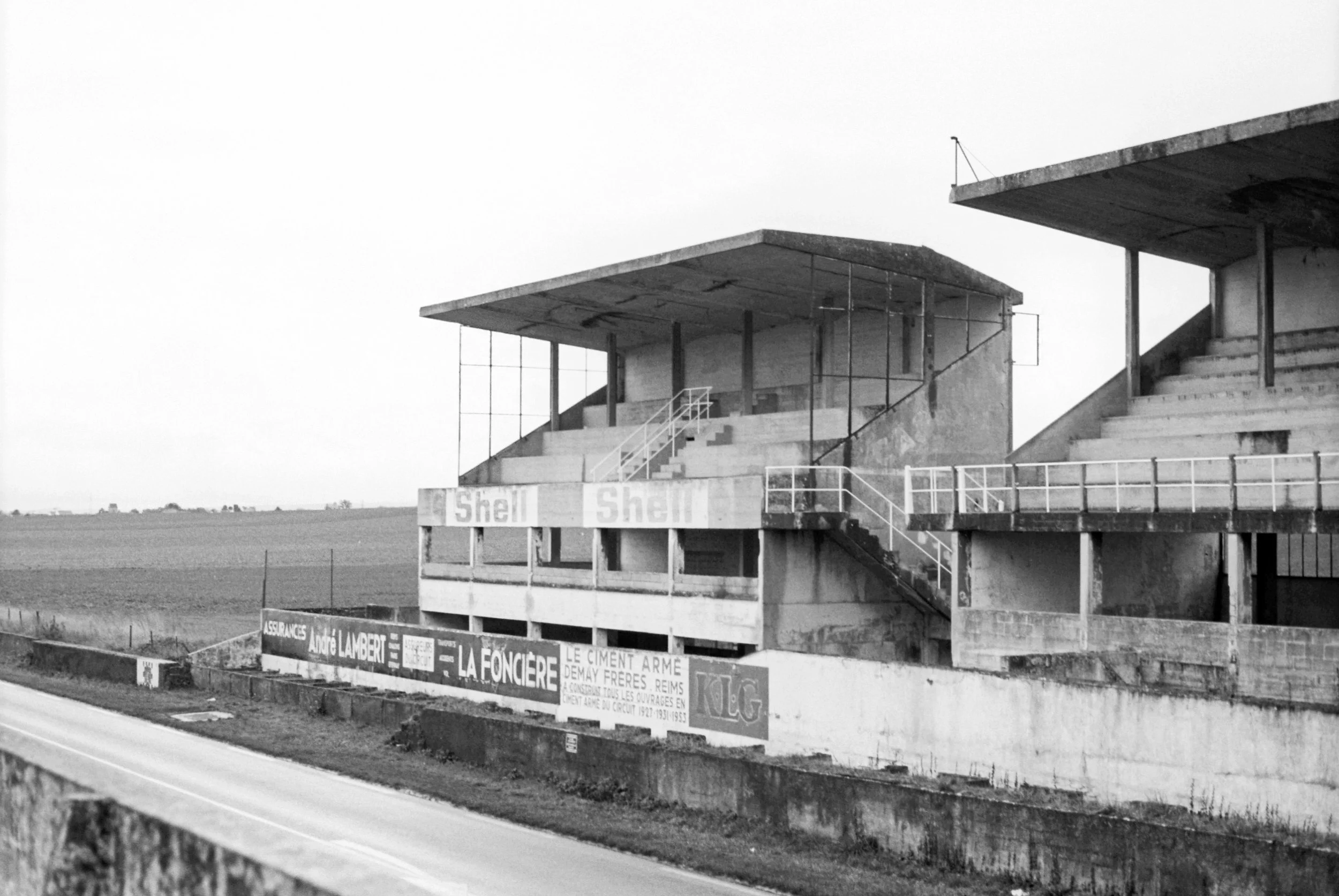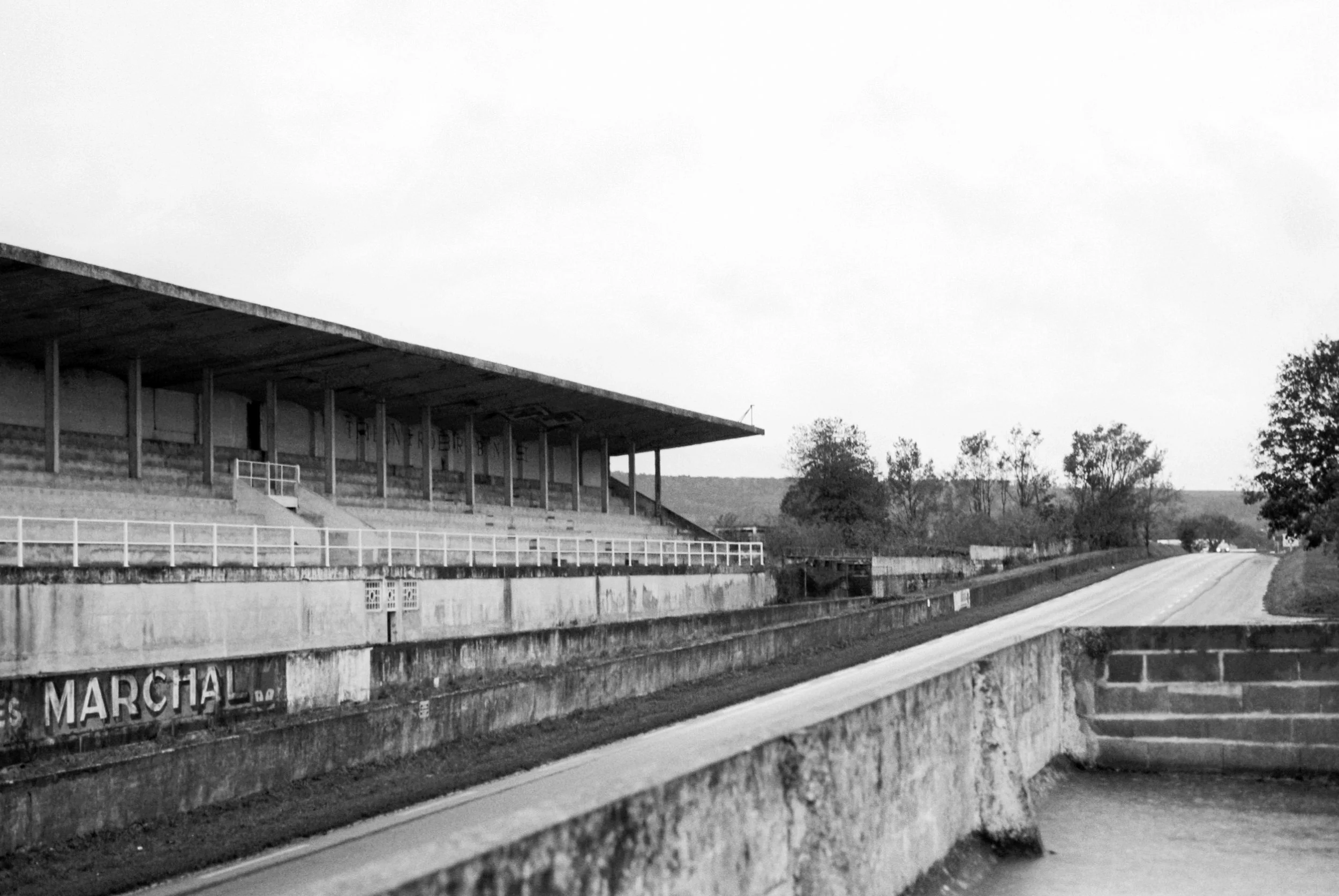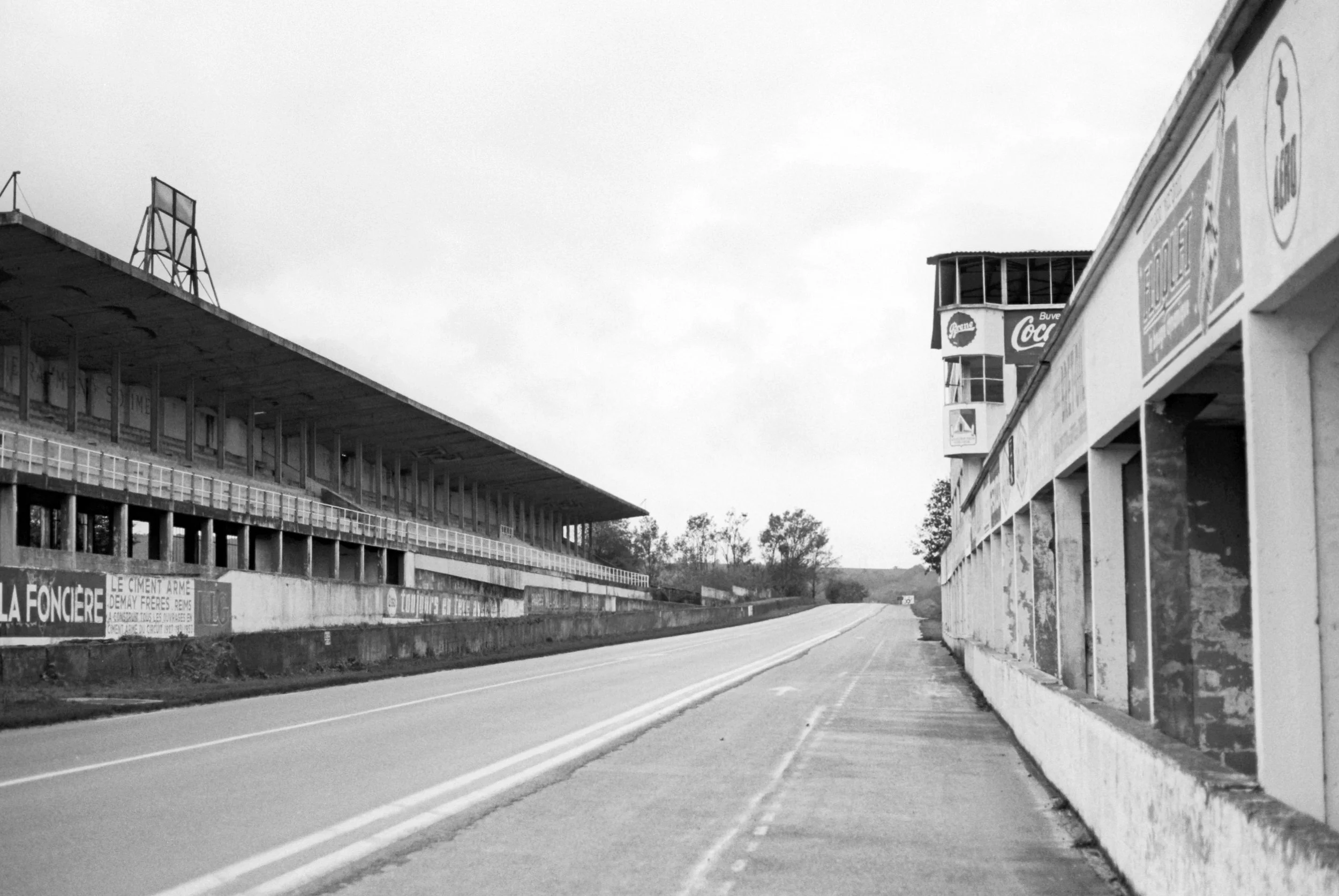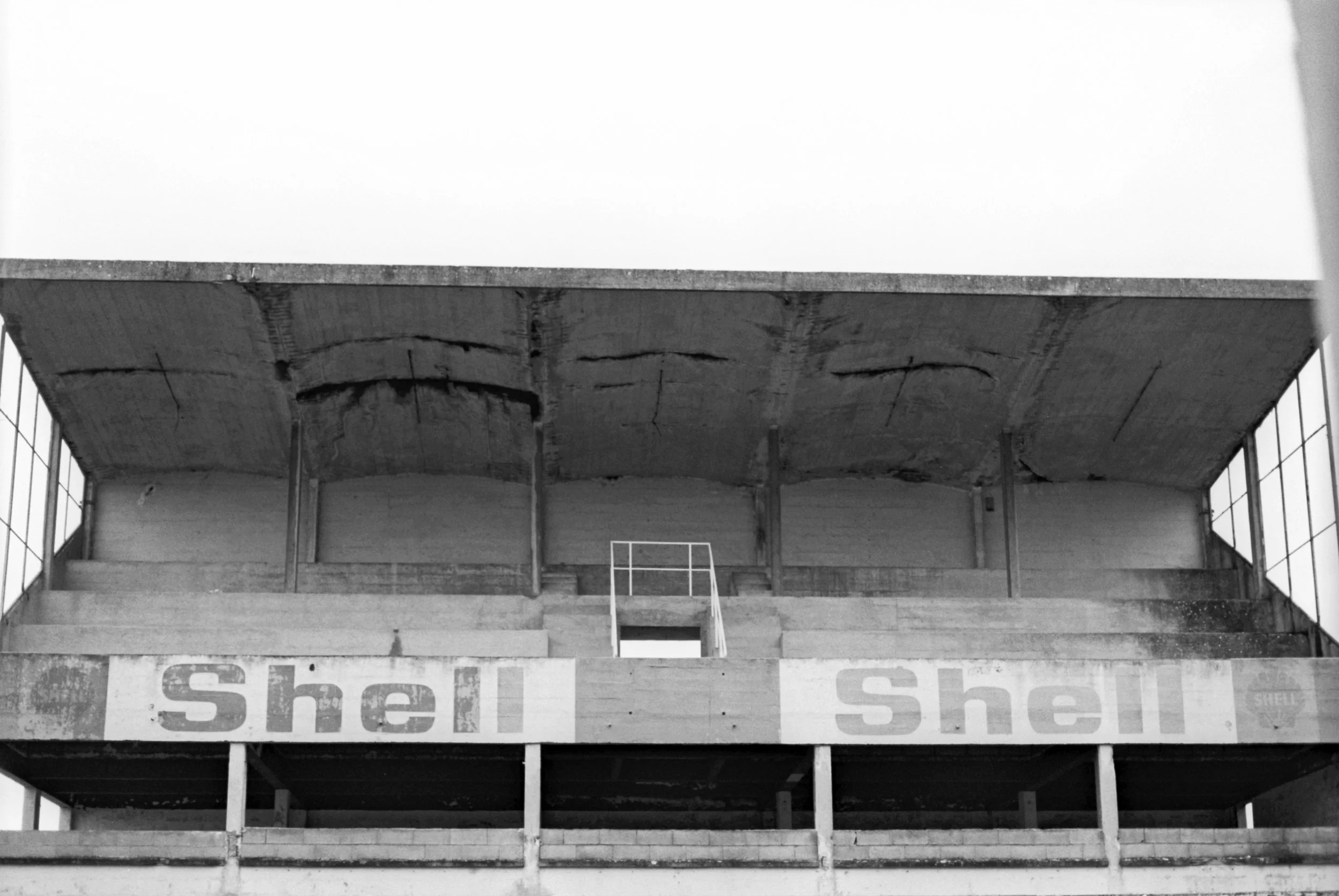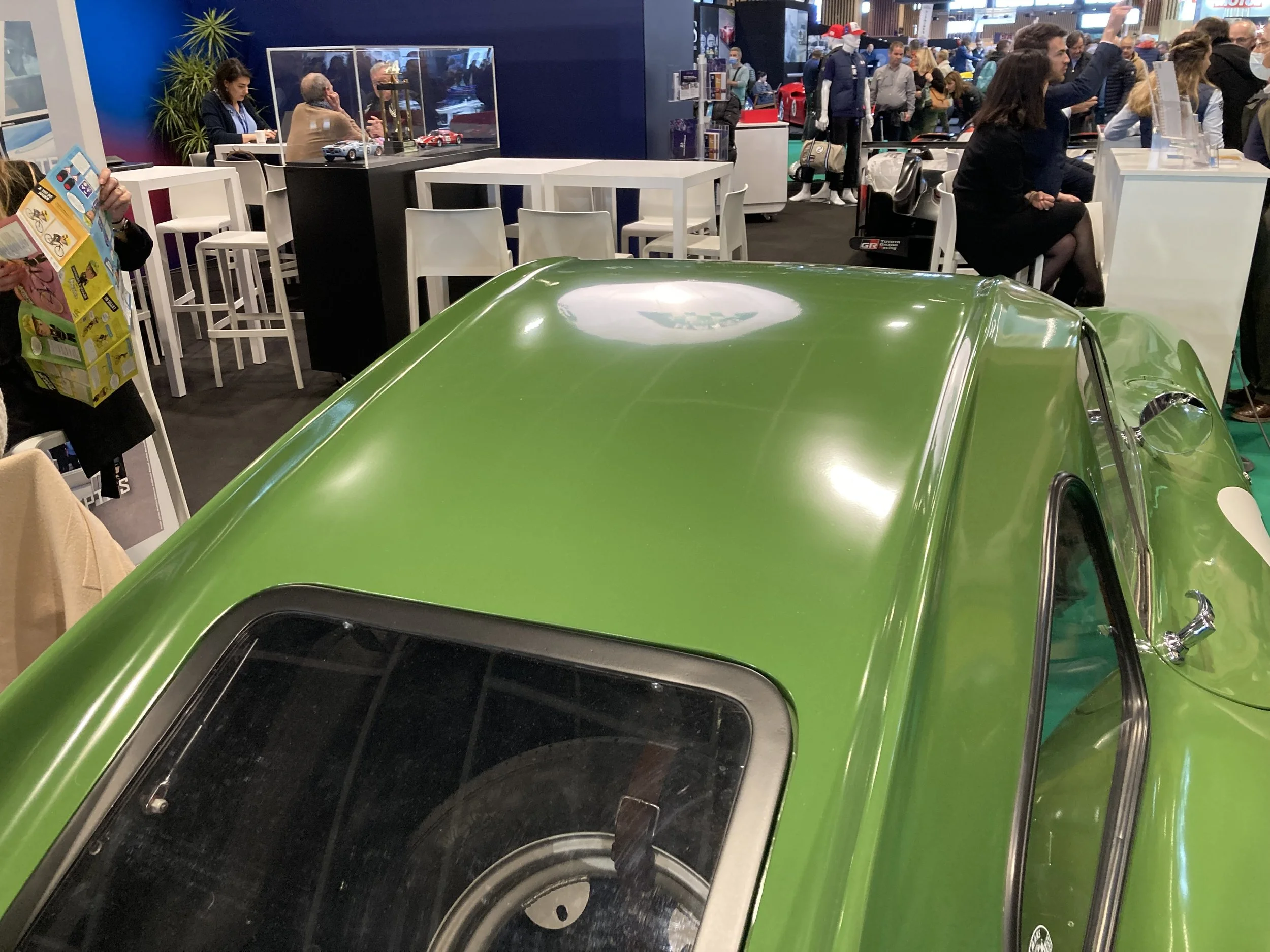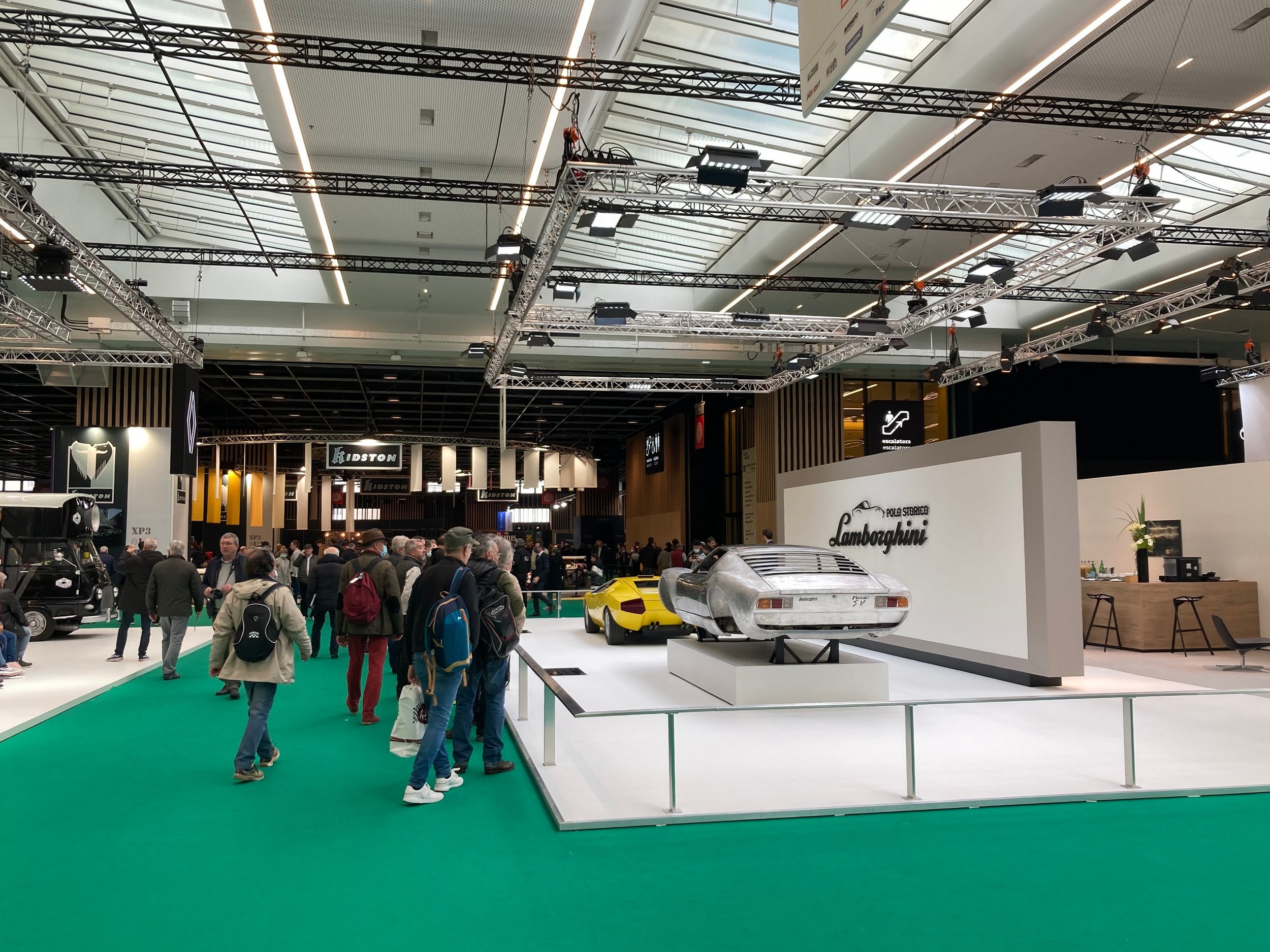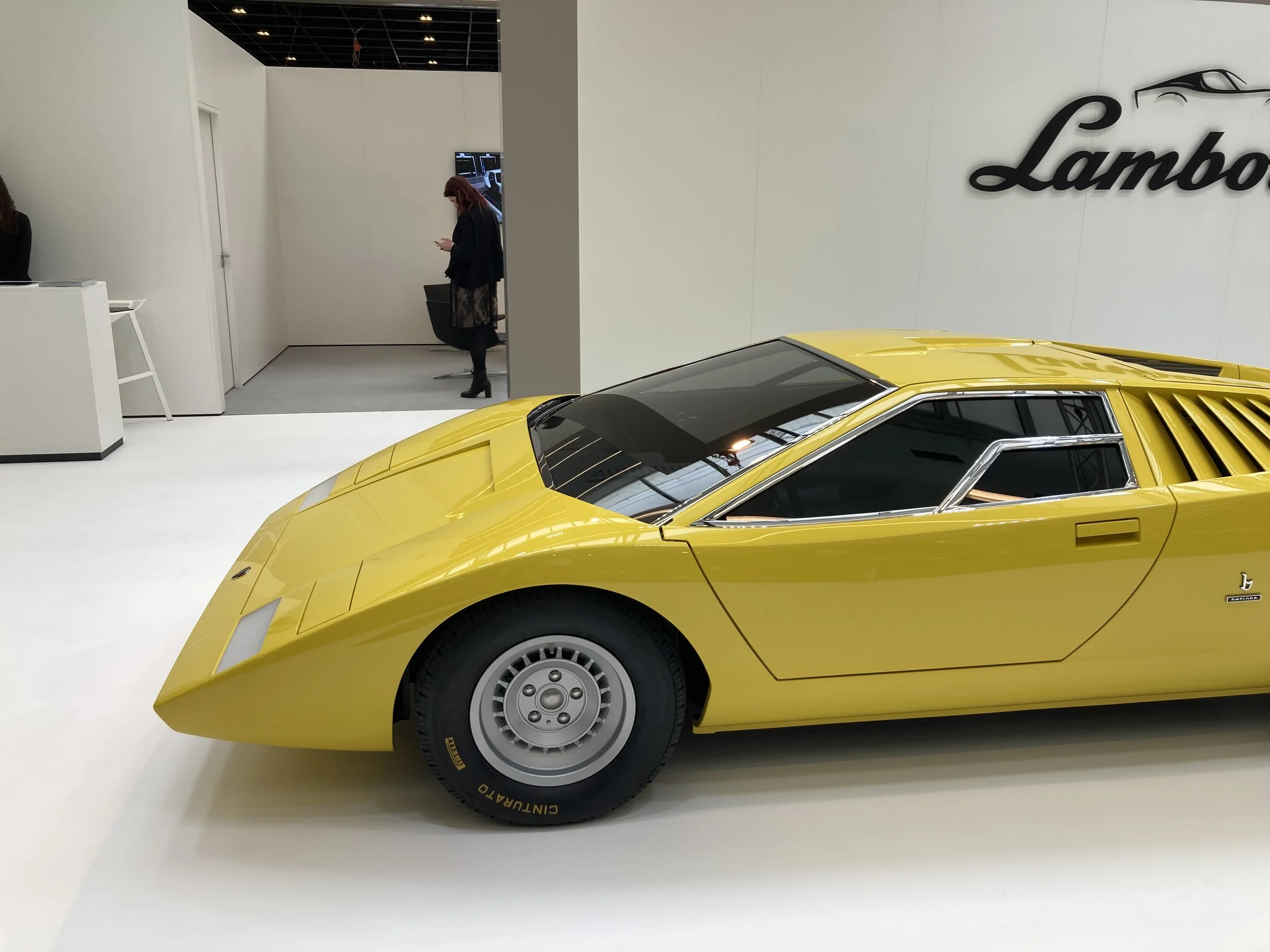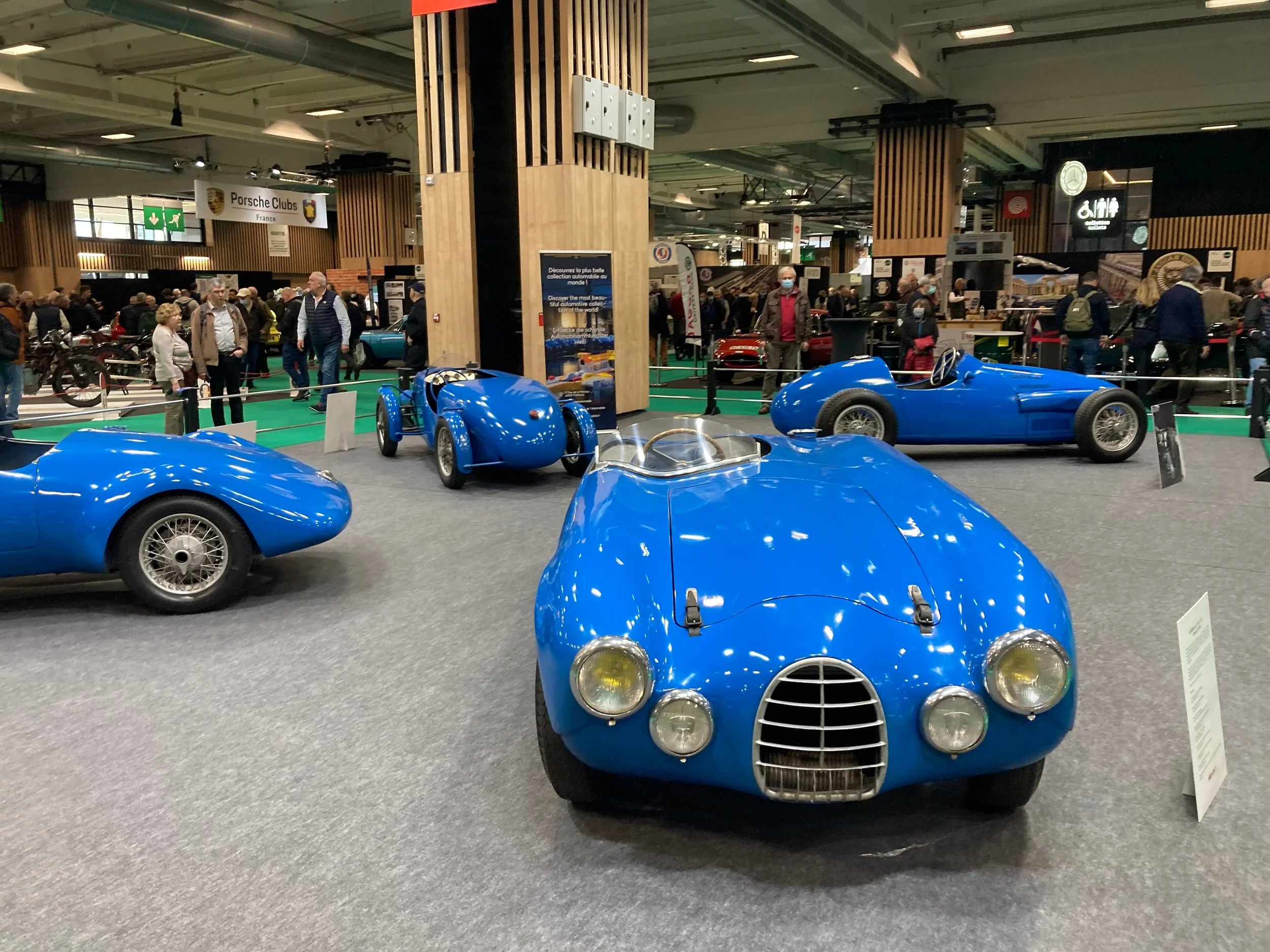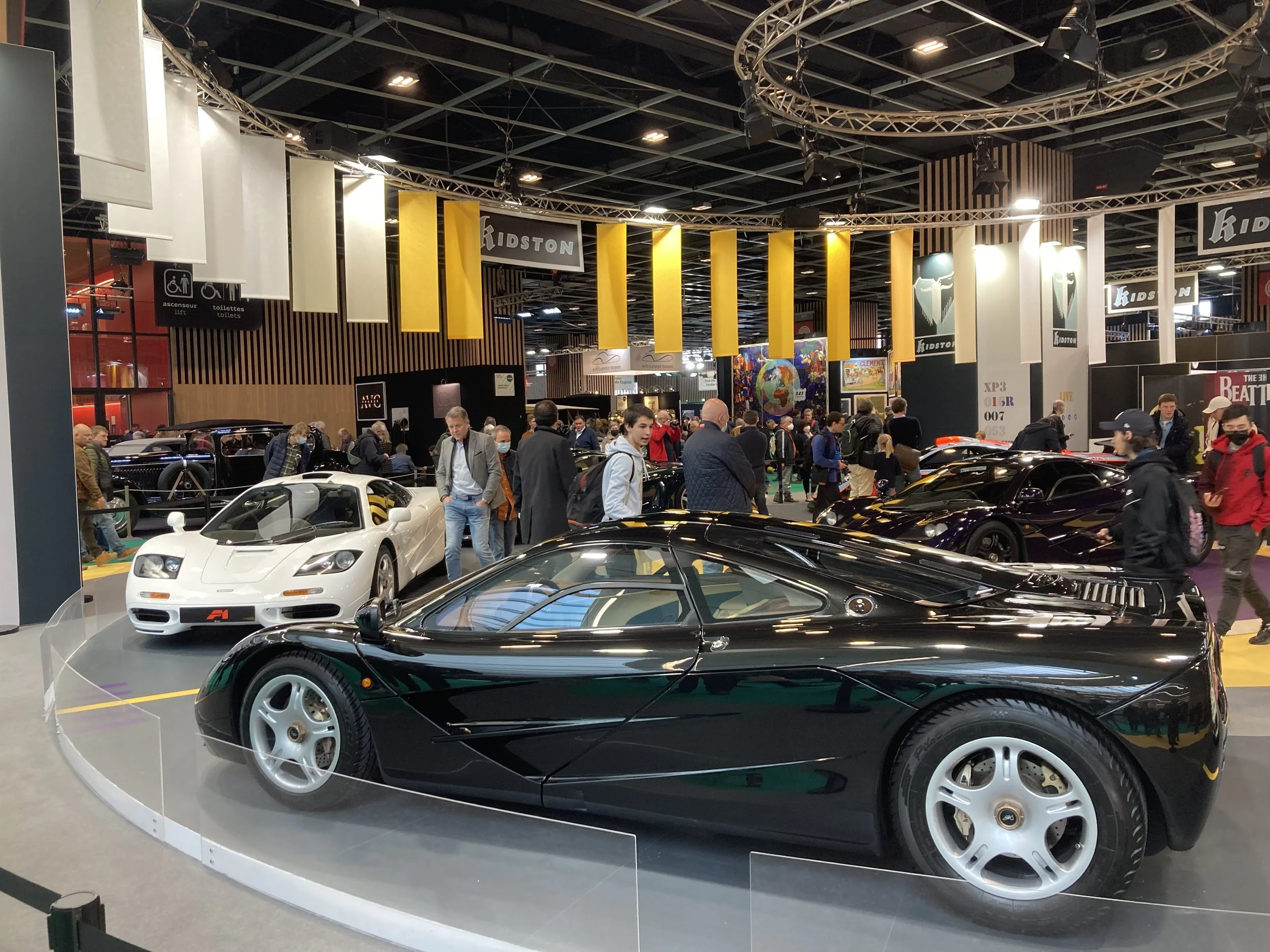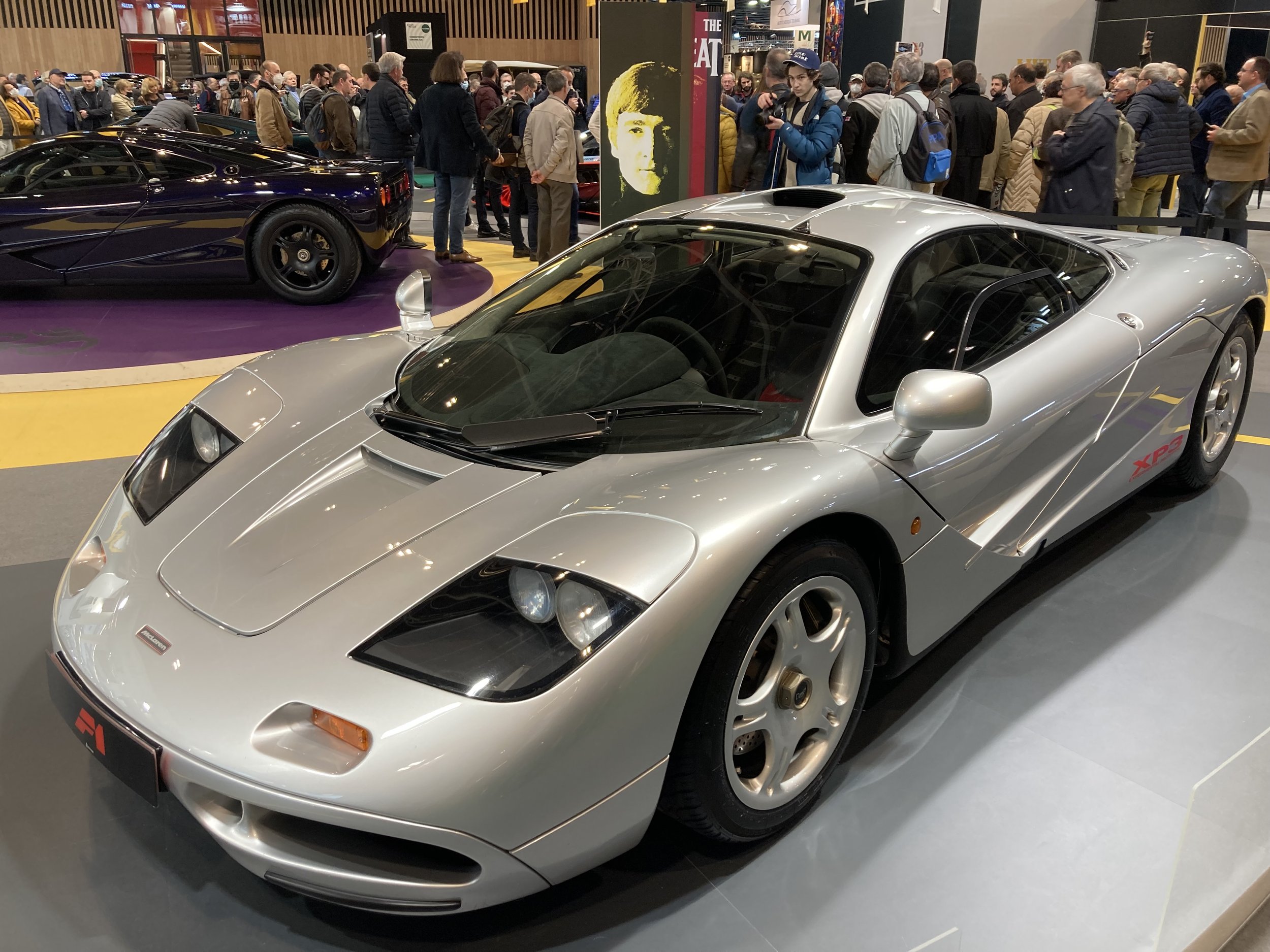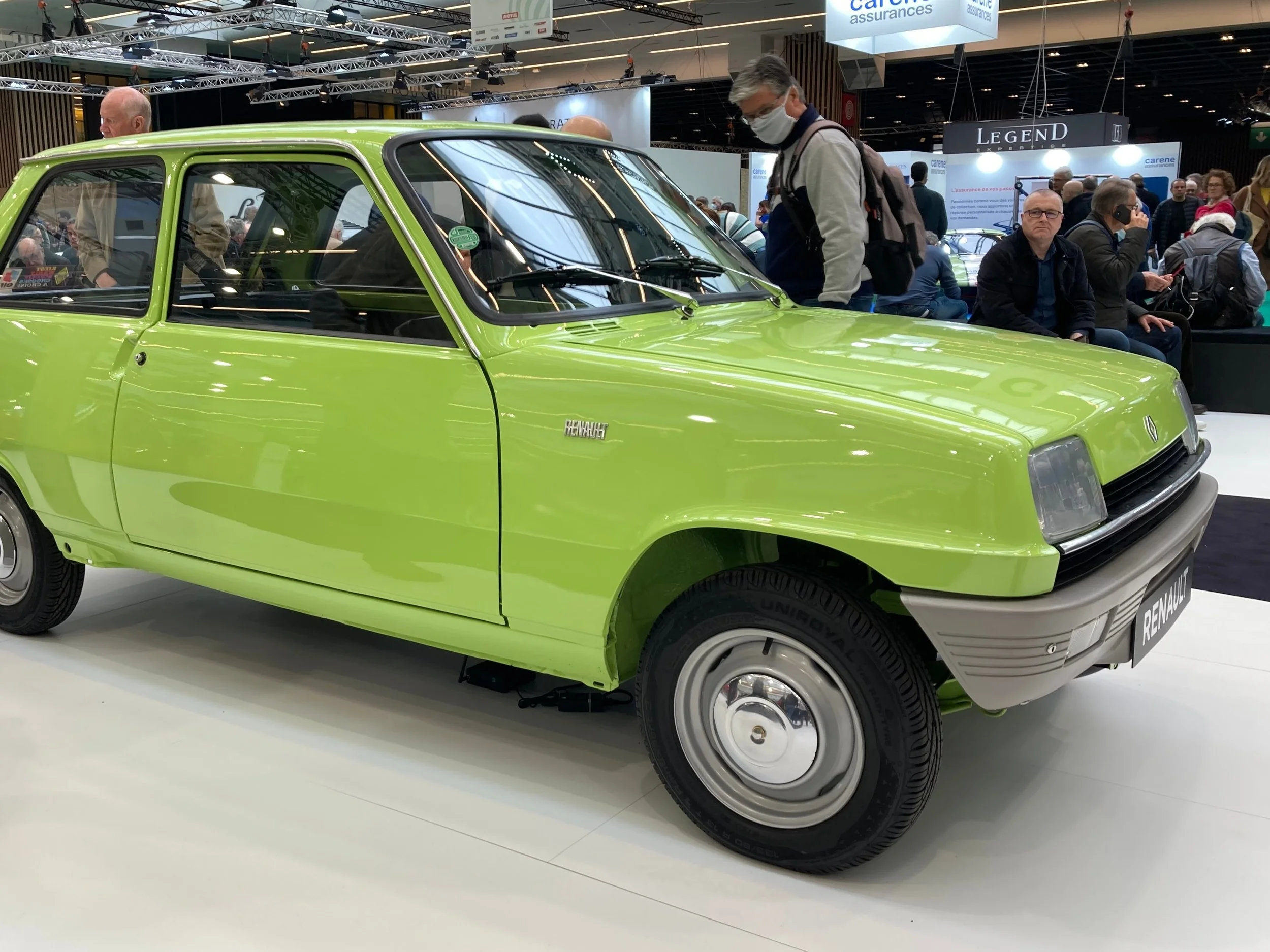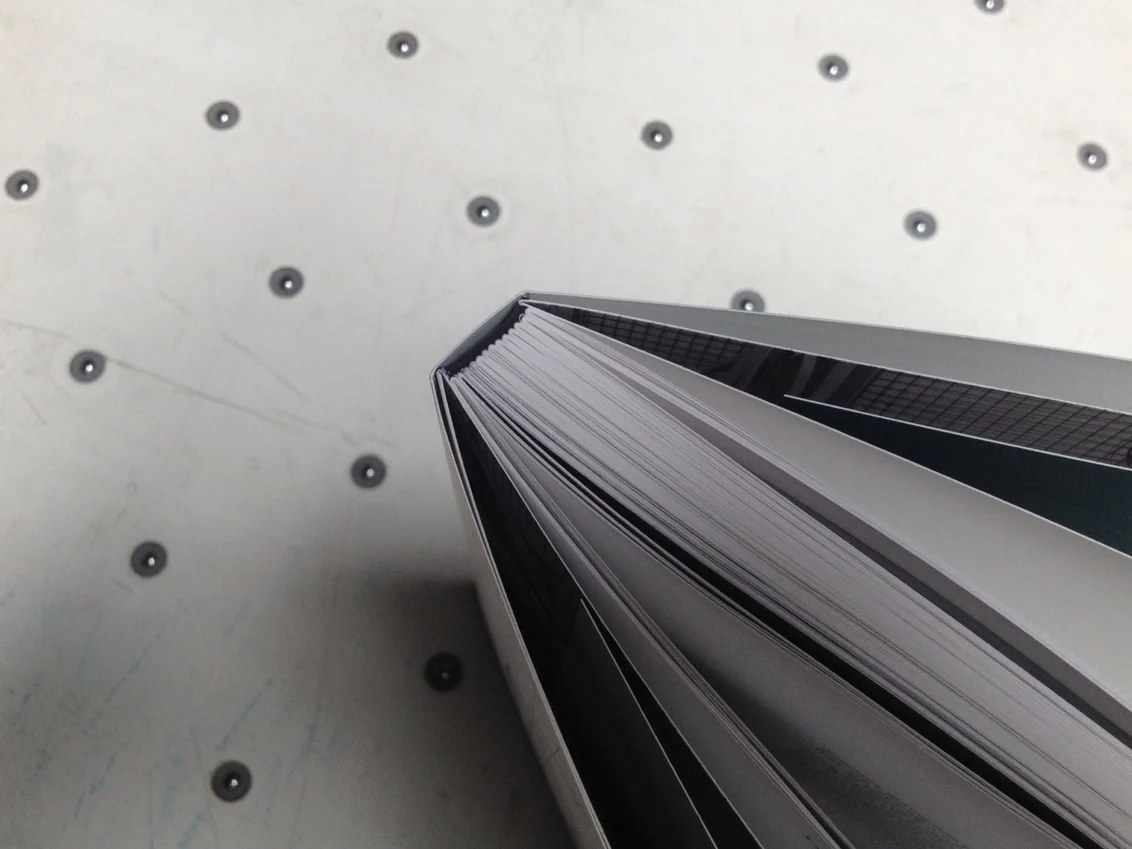So, this is the Bristol 450 racer at the 1954 Reims 12hrs. And what a spellbindingly beautiful little car it was. Car No.21 was driven by Mike Keen and Trevor Line, the other pairings that weekend were Wisdom/Fairman in car No.20 and Wilson/Mayers in No.22.
© Peter Mann both images
Bristol had of course won the 2-litre class in 1953, and came close to winning the 1954 event as well. Safety in those days was not what it is today. Here are Jack Fairman’s helmet, goggles and gloves with their original Herbert Johnson & Polaroid boxes (courtesy of Olivier Boré).
This is Reims today:
If you ever find yourself in the area do have a look around. What remains of this classic French circuit oozes history and charm.



